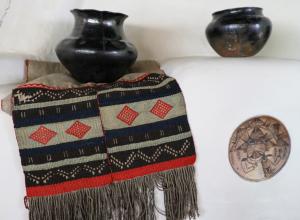In 900 AD, witchcraft was announced to be forbidden by the Church. In medieval canon law, it was stated that witchcraft and magic were delusions and if you believed in witches, you were a victim of seduction by the devil. These early Church pronouncements laid the foundation for witch hysteria that metastasized in the 1400s. Within a century, witch hunts were common. Accused people often confessed to witchcraft under extreme duress or even torture. Those sentenced to death were usually burned or hanged at the stake. The most vulnerable were unmarried women and widows.
The exhibition at the NYHS opens with historical artifacts and accounts that contextualize the Salem Witch Trials in this period of hysteria. One such document is the historical manuscript of Malleus Maleficarum, a guide that teaches one how to identify, hunt, and interrogate witches. This 1486 book, whose title translates to Hammer of Witches, was written by the German clergyman Heinrich Kramer.




























